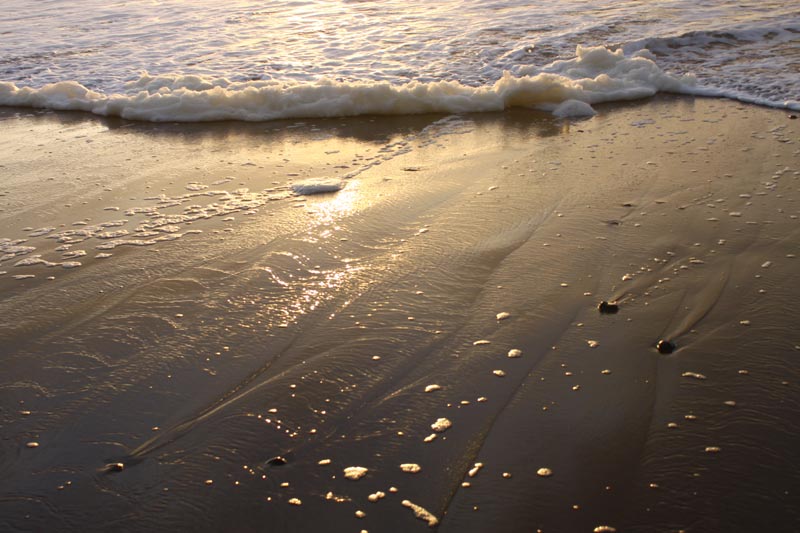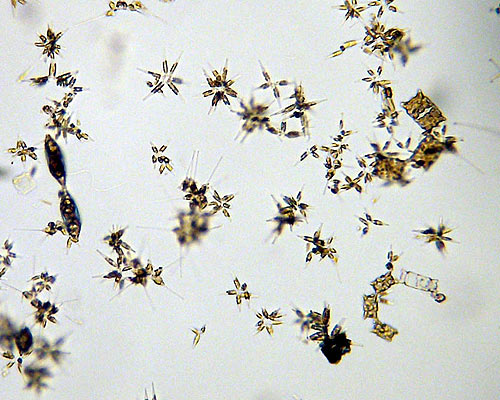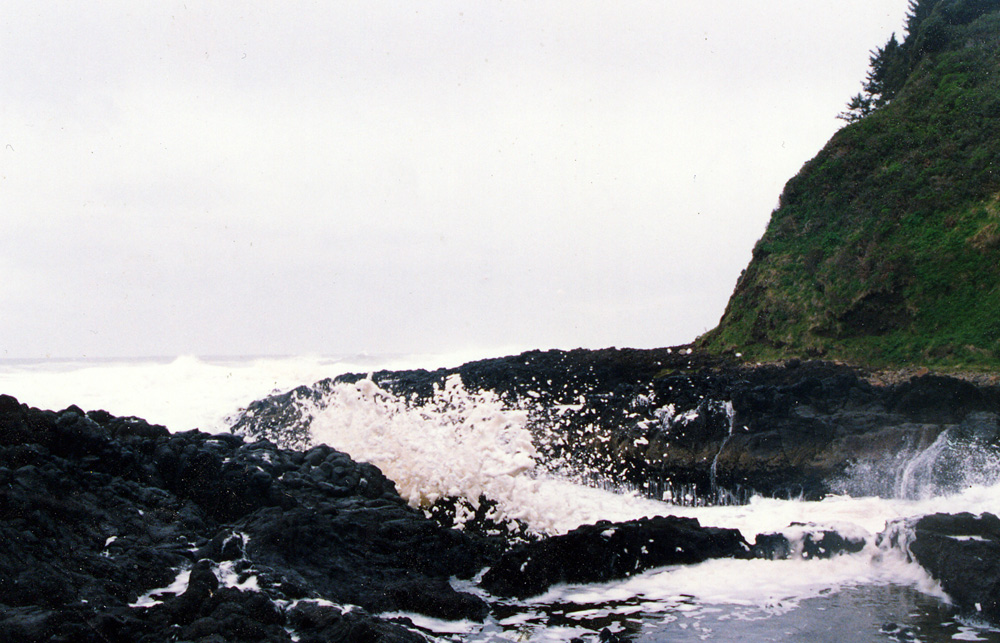Oregon Coast Science Experts: What is Sea Foam? (Video)
Published 10/06/2013 - Updated 2024
By Oregon Coast Beach Connection Staff

(Oregon Coast) – It can be the talk of the town when it happens – or talk of the towns - along the Oregon coast. Huge amounts of sea foam can make quite the splash around the region, especially during and just after those wild winter storms. (Above: foamy Lincoln City).
Includes exclusive listings; some specials in winter
In Cannon Beach:
Includes rentals not listed anywhere else
In Manzanita, Wheeler, Rockaway Beach:
Some specials for winter
In Pacific City, Oceanside:
Some specials for winter
In Lincoln City:
Some specials for winter
In Depoe Bay, Gleneden Beach:
Some specials for winter
In Newport:
Look for some specials
In Waldport
Some specials for winter
In Yachats, Florence
Some specials for winter
But just what is sea foam?
What it isn't is a form of pollution – it's exactly the opposite, in fact. It does create a kind of shocked reaction in people that haven't seen sea foam before, and this in turn causes them to ask locals about something the locals don't understand is even being questioned in the first place. Beach-dwelling Oregonians are very used to it.
Dr. Bill Hanshumaker, with the Hatfield Marine Science Center in Newport [as of this writing in 2013], said that essentially foam in the ocean is created by tiny little phytoplankton that have died and how their skeletons change the surface tension of the water. The more phytoplankton, the more dead ones you have. The more skeletons of phytoplankton you have out there, the more surface tension and the more bubbles you have in the form of sea foam.

Above: photo of diatoms under a microscope courtesy Seaside Aquarium
Phytoplankton are tiny one-celled organisms that are essentially the bottom of the food chain, kind of like microscopic plants. Whales eat gobs of them, and they also in turn create just about all that sea foam the Oregon coast is known for.
It's a lot like soap bubbles, Hanshumaker explains. In fact, just like it – except the materials are different, and almost as clean.
“It's very much the way that soap bubbles are created by changing surface tension and allowing air to be trapped between layers of fluid,” Hanshumaker said.

Oregon Coast Beach Connection photo: Really thick foam near Yachats - so heavy it started to float upwards, looking like snow going the wrong direction
The critical ingredient in foam – on an even tinier level - is the cytoplasm of phytoplankton, a kind of fatty material that holds them together.This is inside the phytoplankton cell. These cytoplasm bits wind up gluing the skeletons together, forming layers that trap the air inside the fluid known as the ocean, and thus creating the bubbles.
This is the cause of all the foam you see on the Oregon coast – and other beaches around the world – whether it's a lot of foam or just a little bit. Almost all the time, except for unusually calm days, you'll see sea foam.
In stormy weather, however, that's when it can get really spectacular, showing up in huge masses of sudsy stuff that can look like snow.
The more wind, however, the more foam you're apt to see. But a few other elements can send these big phytoplankton events into overdrive, like a phytoplankton bloom – which is sort of a mass birth of the little critters.
“First you have upwelling, which is cold water causing a lot of nutrients coming up,” Hanshumaker said. “When there's a lot nutrients in the water, you have a phytoplankton bloom, diatoms, dinoflagellates – a huge population. Then you have the wind and storms which breaks apart cells, the cell fat tends to glue the skeletons together and trap the air, causing them to pile up in suds-like masses.”
REALLY Wild Sea Foam - Oregon CoastSent to us by a reader in 2022 (and we apologize but we can't find who it came from.....but we think it's Sherry Smith). Appears to be Yachats. This is what sea foam looks like when it goes BONKERs in the winter (and spring). Amazing major suds events. What is sea foam? It's actually a good thing and kind'a complex. See https://www.beachconnection.net/news/seafoam100613_510.php
Posted by Oregon Coast Beach Connection on Thursday, November 7, 2024
Upwellings in the ocean can change their habits from year to year, causing foam to be a bit different each year. in 2012, for instance, winds shifted back and forth from southwest to northwest. This causes foam clumps and spectacular foam events to be rather episodic – meaning on and off. If you have winds more continually from the northwest, this keeps the upwellings around and thus the sea foam sightings as well, Hanshumaker said.
Diatoms tend to be more prevalent in this part of the Pacific Ocean than dinoflagellates. Dinoflagellates are actually the form of phytoplankton that cause glowing sand to happen on the beaches at night (more about glowing sand here). So if you see a lot of sea foam happening, and there hasn't been any rain in the last 24 hours to kill off the dinoflagellates, you're chances of seeing glowing sand is increased some.
Diatoms tend to really let you know when there's a lot of them. All of a sudden, especially in winter and spring, you start to see brown foam in the surf, often on the beaches too. This is caused by huge amounts of diatoms. That Wonderful But Weird Thing That Freaks Out People on Oregon Coast: Brown Waves
This tends to happen up around Seaside, Gearhart and Warrenton in such a heavy-handed way it alarms tourists. Because of the Columbia River, nutrient levels can be so good for diatoms they appear in such large, dark clumps of brown foam that it looks like oil on the beaches, or some brown sludge even. The waves in Seaside can be quite brown at times.
But it's a good thing. In fact, it's the sign of a healthy ocean. The Seaside Aquarium and local tourism officials are forced to field lots of questions about it from tourists and post many signs on the subject as it really freaks people out.
In fact, on many occasions on beaches you'll see dark, brown streaks or spots, or even black spots. That usually is not oil – except maybe on some of the few beaches where driving is allowed, like Pacific City, Gearhart or Warrenton.
Another interesting factoid about these forms of sea foam: what they look like under a microscope.
“Dinoflagellates look like a soap bubble with a tail, or a hook,” Hanshumaker said. “Diatoms have a more symmetrical structure.”
Below, more Oregon coast and Oregon Coast Hotels in this area - Where to eat - Maps - Virtual Tours
Oregon Coast Vacation Rentals
Oregon Coast Lodging Specials
More About Oregon Coast hotels, lodging.....
More About Oregon Coast Restaurants, Dining.....
 Andre' GW Hagestedt is editor, owner and primary photographer / videographer of Oregon Coast Beach Connection, an online publication that sees over 1 million pageviews per month. He is also author of several books about the coast.
Andre' GW Hagestedt is editor, owner and primary photographer / videographer of Oregon Coast Beach Connection, an online publication that sees over 1 million pageviews per month. He is also author of several books about the coast.
LATEST Related Oregon Coast Articles
South Oregon Coast Goes Interstellar with Egyptian Theatre's Star Trek Film FestIn Coos Bay Sept 5 - 6 with three Trek movies. Coos Bay events
Curb, Road Construction Resumes in Lincoln City as Oregon Coast Season Begins...
Crews return Sept 15 with some dust and small delays. Traffi
SOLVE Cleanup Happens Along Oregon Coast, Inland Sept 20 Through 28
SOLVE is inviting volunteers to take part. Brookings events, Gold Beach events, Port Orford events, Coos Bay events, Bandon events, Florence events, Yachats events, Newport events, Lincoln City events, Rockaway Beach events, Manzanita events, Cannon Beach events, Seaside events, Astoria events
Waldport Event Marks 50 Years to the Day Heaven's Gate Cult Came to Oregon Coast
Sept 14 looks into the cult's meeting in town with three former members. Waldport events
Washington Coast's Cape Disappointment Will Close Parts of Operation Until Sp...
Will undergo significant infrastructure upgrades starting September 16
Oregon Coast Scenic Railroad's Fame Engine Turns 100 Years Old with Special Runs
Sept 20 and 21 various special rides. Garibaldi events, Rockaway Beach events, Wheeler events
Manzanita's Ocean Inn Adds More Ways to Preserve, Give Back to Oregon Coast E...
About to become an Ocean Friendly Hotel through Surfrider. Manzanita hotel reviews, Manzanita hotel news
Burst of Cranberry Colors, Food, Fun on S. Oregon Coast as Bandon Celebrates ...
79th Annual Bandon Cranberry Festival recognizes farming through education, entertainment and fun. Bandon events
Back to Oregon Coast
Contact Advertise on Oregon Coast Beach Connection
All Content, unless otherwise attributed, copyright © Oregon Coast Beach Connection. Unauthorized use or publication is not permitted



















































